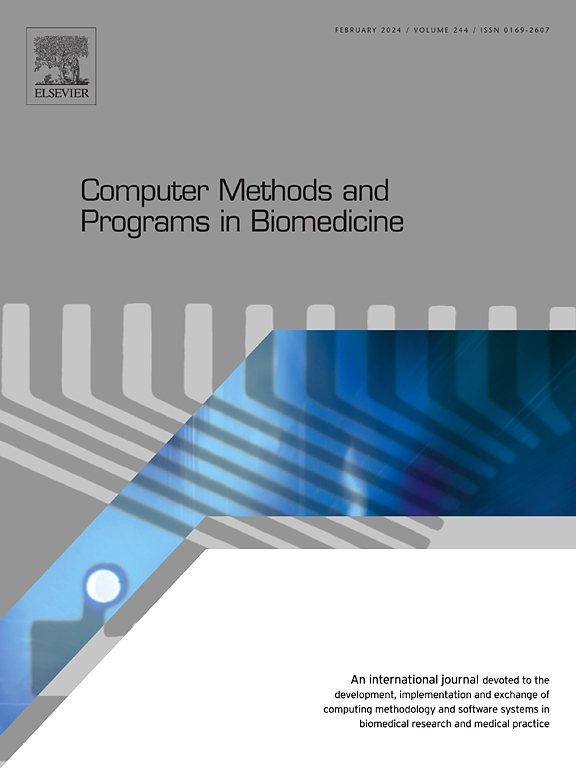Fully automated segmentation of brain and scalp blood vessels on multi-parametric magnetic resonance imaging using multi-view cascaded networks
IF 4.9
2区 医学
Q1 COMPUTER SCIENCE, INTERDISCIPLINARY APPLICATIONS
引用次数: 0
Abstract
Background and Objective
Neurosurgical navigation is a critical element of brain surgery, and accurate segmentation of brain and scalp blood vessels is crucial for surgical planning and treatment. However, conventional methods for segmenting blood vessels based on statistical or thresholding techniques have limitations. In recent years, deep learning-based methods have emerged as a promising solution for blood vessel segmentation, but the segmentation of small blood vessels and scalp blood vessels remains challenging. This study aimed to explore a solution to overcoming the challenges.
Methods
This study proposes a multi-view cascaded deep learning network (MVPC![]() Net) that combines multiple refinements, including multi-view learning, multi-parameter input, and a multi-view ensemble module. We evaluated the proposed method on a dataset of 155 patients, which included annotations for brain and scalp blood vessels. Five-fold cross-validation was conducted on the dataset to assess the performance of the network.
Net) that combines multiple refinements, including multi-view learning, multi-parameter input, and a multi-view ensemble module. We evaluated the proposed method on a dataset of 155 patients, which included annotations for brain and scalp blood vessels. Five-fold cross-validation was conducted on the dataset to assess the performance of the network.
Results
Ablation experiments showed that the proposed refinements in MVPC![]() Net significantly improved the segmentation of small blood and low-contrast vessel performance, which segmented scalp blood vessels from the original images, increasing the Dice and the 95 % Hausdorf distance (HD), from 0.865 to 0.922 and from 1.28 mm to 0.47 mm, respectively, compared to the baseline model.
Net significantly improved the segmentation of small blood and low-contrast vessel performance, which segmented scalp blood vessels from the original images, increasing the Dice and the 95 % Hausdorf distance (HD), from 0.865 to 0.922 and from 1.28 mm to 0.47 mm, respectively, compared to the baseline model.
Conclusions
The proposed method in this study provided a fully automated and accurate segmentation of brain and scalp blood vessels, which is essential for neurosurgical navigation and has potential for clinical applications.
求助全文
约1分钟内获得全文
求助全文
来源期刊

Computer methods and programs in biomedicine
工程技术-工程:生物医学
CiteScore
12.30
自引率
6.60%
发文量
601
审稿时长
135 days
期刊介绍:
To encourage the development of formal computing methods, and their application in biomedical research and medical practice, by illustration of fundamental principles in biomedical informatics research; to stimulate basic research into application software design; to report the state of research of biomedical information processing projects; to report new computer methodologies applied in biomedical areas; the eventual distribution of demonstrable software to avoid duplication of effort; to provide a forum for discussion and improvement of existing software; to optimize contact between national organizations and regional user groups by promoting an international exchange of information on formal methods, standards and software in biomedicine.
Computer Methods and Programs in Biomedicine covers computing methodology and software systems derived from computing science for implementation in all aspects of biomedical research and medical practice. It is designed to serve: biochemists; biologists; geneticists; immunologists; neuroscientists; pharmacologists; toxicologists; clinicians; epidemiologists; psychiatrists; psychologists; cardiologists; chemists; (radio)physicists; computer scientists; programmers and systems analysts; biomedical, clinical, electrical and other engineers; teachers of medical informatics and users of educational software.
 求助内容:
求助内容: 应助结果提醒方式:
应助结果提醒方式:


